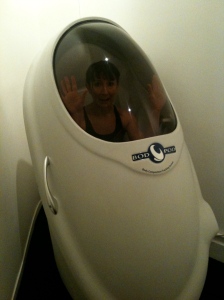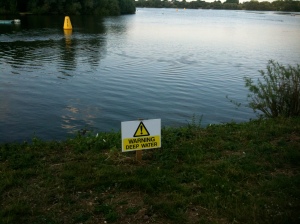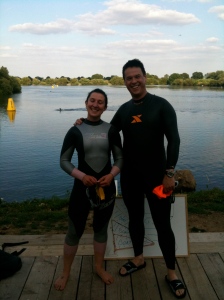I mentioned in a previous blog post that I recently spoke at the FIA (Fitness Industry Association) Communications Forum in February. I was asked along in my capacity as a freelance journalist and blogger (although I also do copywriting) and my brief was to talk about how the delegates could find, engage with and make the most of fitness journalists and bloggers.
People in the room included PRs responsible for sport and fitness brands, inhouse marketeers of the same and operators of gyms, leisure centres, facilites and events.
Here’s the outline of my talk. I hope you might find it useful. Please remember it’s just my opinion and based on my experiences as a freelance sport and fitness writer. If you have any questions, I’d be happy to answer them to the best of my ability – just leave a comment.
===
Freelance journalists are positioned somewhere between the editorial staff of publications and the PRs and marketing personnel of fitness brands, products and events.
I’ve been freelancing since 2004. A quick rundown of my personal backstory:
– I was made redundant and moved out of London at the same time
– I’d always wanted to work as a journalist and sport was the obvious niche as it’s my personal passion
– At the time, I was a few months away from my first English Channel swim and I realised that, if I couldn’t successfully pitch sports Editors with a first-person article about Channel swimming, I would never make it as a freelance sport journalist!
– I did pitch that article idea, got a couple of commissions and worked my way up from there
I’ve now written for a range of consumer magazines and NGB membership magazines, including:
220 Triathlon, Triathlete’s World, Women’s Running, Body Fit, Good Housekeeping, Practical Parenting, Coast, The Olympic Review, Swimming Times (ASA), Tri News (BTF) and the inflight magazines of easyjet, Air Malta and BMI. I’ve also contributed to a couple of books – one produced by The Observer last year (for which I wrote two chapters) and one (as a ghostwriter) which last week hit the no.9 spot on Amazon’s bestseller list.
My niche is sport and fitness, particularly triathlon, running, cycling, swimming and open-water swimming and any fitness issue relating to women in sport.
On a personal level, I do a lot of sport: I was a swimmer as a child and at University, then took up running and ran for a club. I then threw cycling into the mix and took up triathlon. Latterly I learned to love road riding in its own right and have done sportives. My absolute niche is as an open water swimmer: I’ve swum the English Channel twice as a solo swimmer, and once (there and back) as a relay. I’ve also swum Windermere and around Jersey. In somewhat of a shock departure from all of that, I’m currently training for a bodybuilding competition – a bit of a change!
In addition to journalism, I work as a copywriter, helping companies and brands communicate by writing them clear, persuasive wording for marketing and sales: websites, brochures, newsletters, email marketing and content for social media (blogging, facebook, Twitter etc). I also write a sport, fitness and training blog – The Fit Writer.
What’s the process behind a magazine commission?
There are two ways in which a magazine article can come about: from a pitch from the journalist to the editor, or from a commission from the editor to the journalist. The latter usually (but not always) happens when the editor already knows the journalist’s by reputation, or if the journalist has previously written for the publication.
Pitched
How do we come up with ideas? We will keep an eye on the market, read (online, blogs, forums, Twitter, magazines etc), research, listen, talk. When we pitch an idea we don’t have to have case studies or experts but it strengthens the pitch to be able to mention that we will be able to find these. We will want to put together a strong pitch that is pegged on a news item or something else timely. Case studies and human interest angles are always good.
Commissioned
If we get a commission from an editor, we will usually need to find case studies, expert comment and/or products to fit the brief. We may have to do this extremely quickly. We will not want to let the editor down! Whilst we will want to meet our deadline and our wordcount, it will be just as important that the work we file meets the brief, so we will not want to pad the feature out with “almost but not quite” ideas, weak case studies or incomplete information. We will therefore be looking for PRs or marketeers who can help us by getting spot-on product information or putting us in touch with fantastic experts or case studies.
Kit/product tests
As a note – in my experience, kit tests are always commissioned. So we will never be able to pitch an editor the idea of testing a single product as a straight test. That kind of feature always comes from the editor as a commission so, if you want to get your product in front of an editor, you need to send it to them first and then they will send it to one of their freelancers to test.
Blogging is a different matter . We are the editors of our own blog and those of us who have chosen to do kit tests/product tests on our blogs can be contacted directly with product information to see if it is a good fit for our blog focus and our readership. It has to be your call as to whether or not you think blogs are a suitable outlet for your product or your client, but consumers are increasingly turning to blogs for an authentic peer-to-peer voice when looking online for reviews and feedback.
Who does a freelance journalist work with?
Editors
They are our “bosses” in a way. They pay our bills, they have the power to commission us – or not. We want to keep them happy!
PRs
Can be worth their weight in gold but can make things more difficult than they have to be. Fantastic PRs are a real find and should be treasured! I think it’s silly to perpetuate the “journalists vs PRs” dynamic, as PRs often hold the key to great stories, fantastic ideas and compelling case studies. They are also the route to brilliant quotes from respected experts.
Marketeers
In-house marketing representatives of fitness brands, companies, products can be as useful as PRs but often seem less clued up about how to work directly with journalists and often seem a little “hidden away”. I wish more of them were more active in interacting with us. They can help by keeping us informed about new product developments, lists of events and any press opportunities. If you don’t tell us about it, we probably won’t know until it’s too late!
Product owners/entrepreneurs
Sometimes have a hard time connecting with us but need us – and we need them! They do need to understand what we need, though, which brings me on to my next point.
How can you make the most of freelance journalists?
We want to work with you and hear from you, but you need to know what we need – and what we don’t need – when a deadline is looming. Here are a few tips.
Dos and don’ts
– Do contact us, but only with information we have previously stated we’ll find useful or which will fit the commission we’re working on
– Don’t send information which doesn’t fit the bill, no matter how strongly you feel the magazine should feature it
– Do note our deadline and tell us honestly if you can help us meet it
– Don’t promise anything you can’t deliver
– Do send complete information, images, case studies, contact details
– Don’t send information and then disappear off the face of the earth (at least let us know who else in your team we should speak to)
A good relationship can last a long time
When we find PRs or marketeers who feed us great ideas and help us do our job, we want to keep hold of them! Personally, I am always happy to meet PRs a few times a year to have a mutual thrashing out of ideas, to tell them what I’m working on and to hear which clients they’re working for. As an example, I recently met up with a PR at a tradeshow we were both attending. I took part in a challenge one of her clients was running at the event (and blogged about it) and then talked to her for over an hour. She told me about her latest clients and suggested some really exciting, useable ways I could work them into pitches. As a result, I came up with at least four pitches on the way home, one of which was accepted and one of which is being considered. I really value that PR and will always read her press releases and take her phone calls.
What makes a good press release?
We’re always aware that editors get hundreds of pitches per day. Similarly, be aware that we get hundreds of press releases. Here are a few tips to help yours be amongst the ones we read and keep hold of:
– it’s not enough to have a product, you need to understand what we need in order to work that product into a magazine article
– we need an angle and a story to support the product
– newsworthiness is good – peg the press release on something topical or timely
– a spokesperson or ambassador is helpful
– case studies, stories, real people are always useful – but they need to be genuine and we potentially need to be able to interview and photograph them
– images need to be high res and labelled
– please don’t forget the basics – dates, contact details, names, ages, prices, RRP, where to buy…
What kind of news interests us?
This will depend on the journalist and their niche but, generally, anything related to a news story or event is better for us to pitch, as is anything with a strong human interest angle, a great set of quotes, a solid expert or spokesperson, and of course anything truly new, fun or innovative which hasn’t been done before! (Not asking for much, are we…!)
What do we need from you?
When we approach you:
– understand our deadlines
– tell us honestly if you can help in time or not
– full and complete information
– access to interviewees
– high res images
– (potentially) product to test
When you approach us
– relevant information which fits our niche (ie don’t send information about golf to an equestrianism journalist unless they’ve asked for it)
– friendly, helpful – meetings are good
– make sure you spell our names properly and don’t BCC with someone else’s name!
– personal details are good (Hi Nicola, I saw your feature about wetsuits in 220 Triathlon recently…)
How to find a journalist or commission
– Twitter – search the hashtag #journorequest
– website Responsesource
– Networking – online and “real life”
Thank you – please do keep in touch with me and send me information about any relevant products, events, interview opportunities or brand developments. I am happy to consider product/kit tests for my blog, and guest blog posts. I am also available for advice or practical help about copywriting for sport and fitness.
How to engage with fitness journalists and bloggers is a post from The Fit Writer blog.





 Posted by Nic at thefitwriter
Posted by Nic at thefitwriter 








